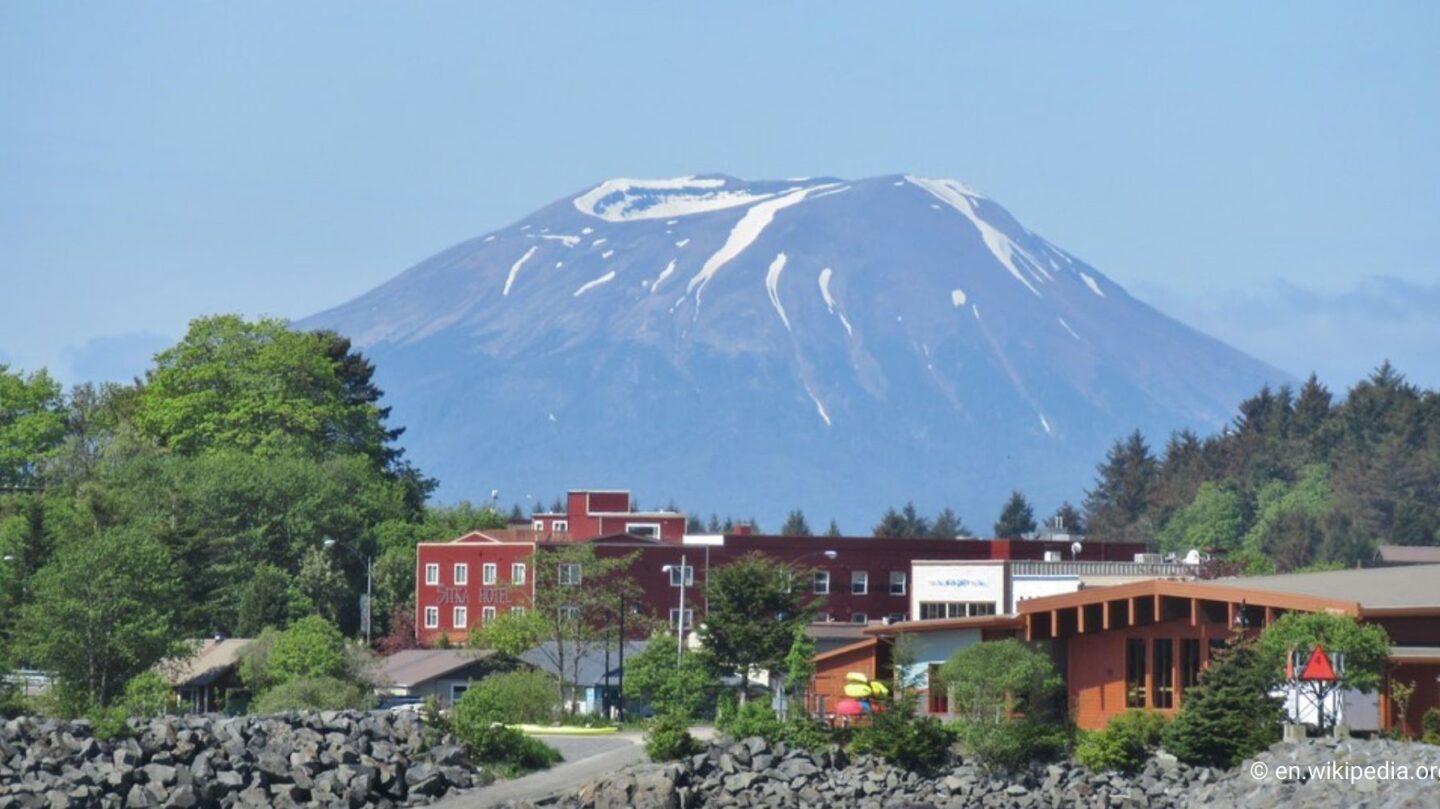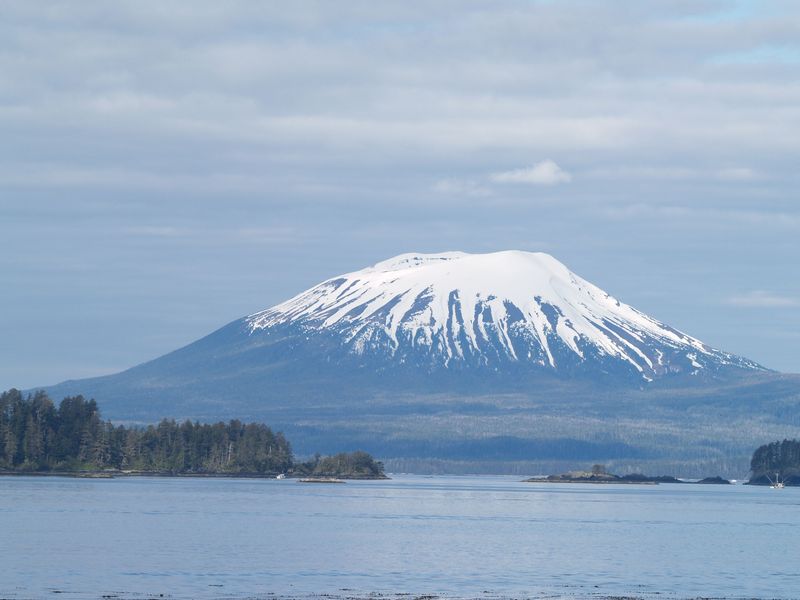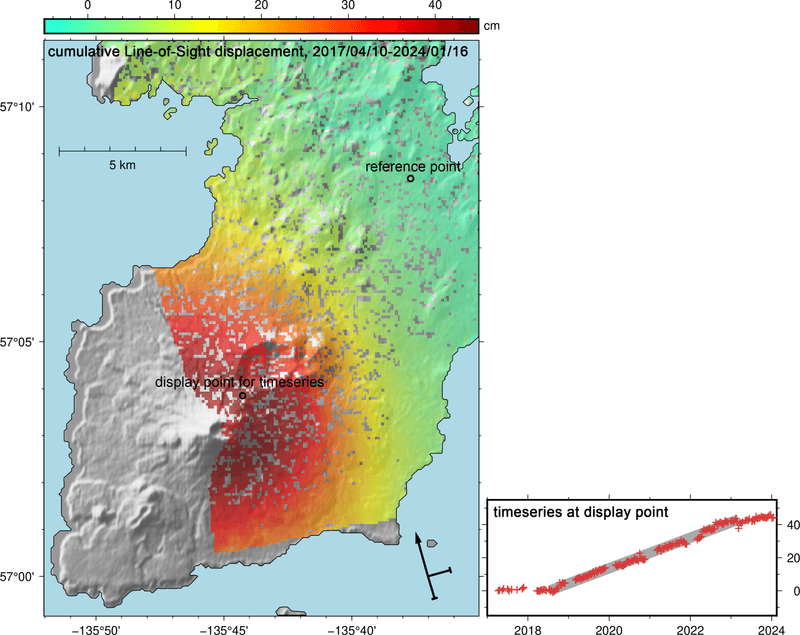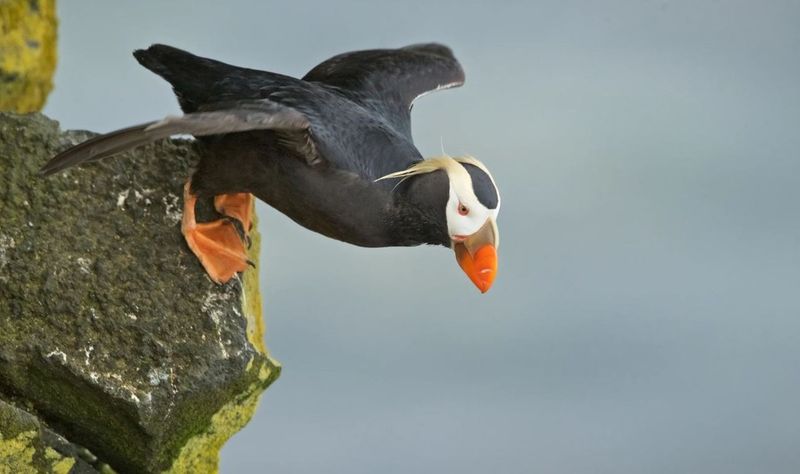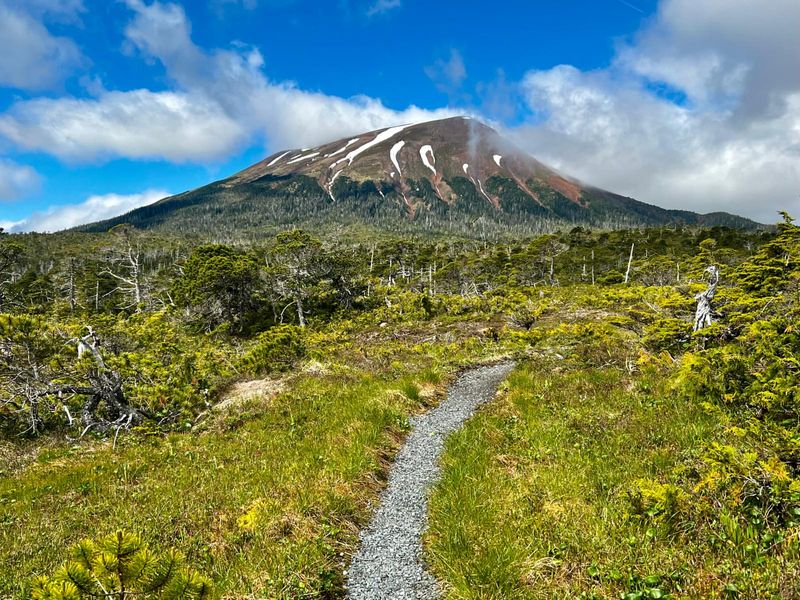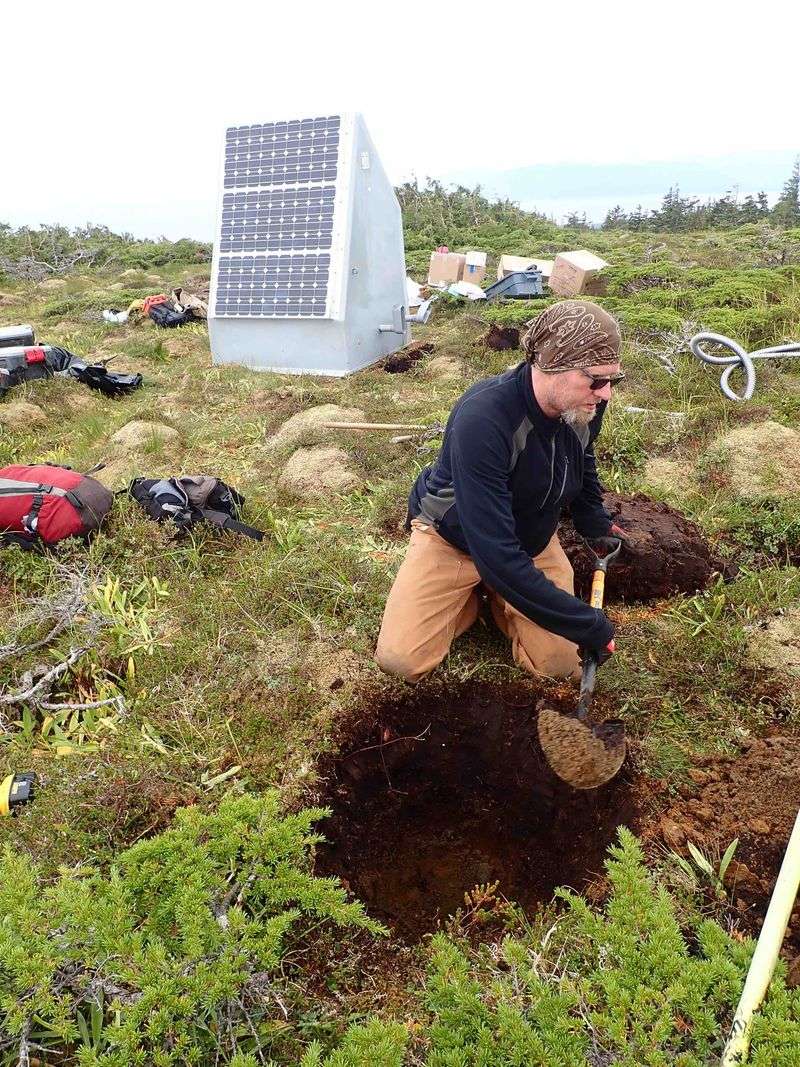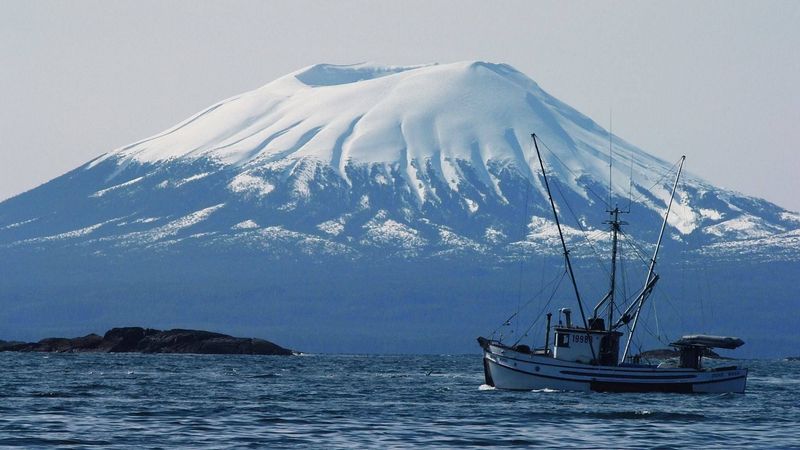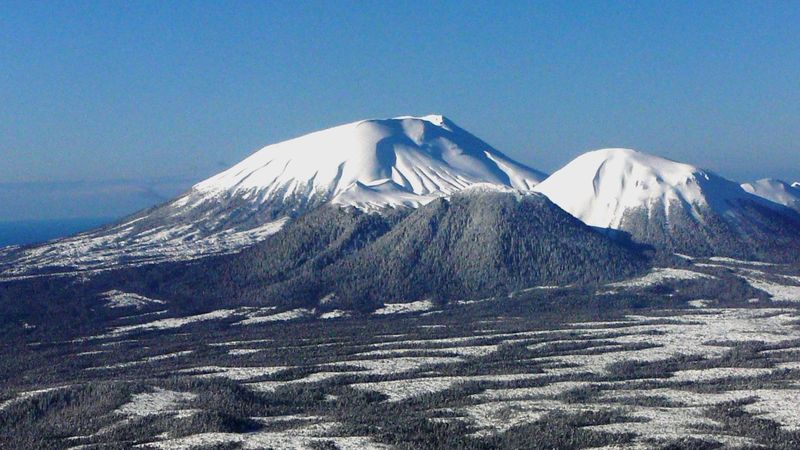Mount Edgecumbe, a majestic stratovolcano located on Kruzof Island in Alaska, has been dormant for centuries. Recently, however, seismic activity has suggested that this ancient giant might be stirring once more. This blog post explores the fascinating details surrounding Mount Edgecumbe’s potential awakening, offering insights into the history, geology, and potential impact of this natural wonder.
Historical Background
For centuries, Mount Edgecumbe has stood as a silent sentinel on Kruzof Island. Its last known eruption occurred over 4,000 years ago, leaving behind a landscape shaped by molten lava and ash. The local Tlingit people have long revered the volcano, weaving its presence into their cultural narratives.
This rich history offers a tapestry of myths and legends that speak to the mountain’s power and mystery. Today, Mount Edgecumbe remains a symbol of nature’s unpredictable beauty, drawing geologists and tourists alike who are curious about its past and future.
Geological Significance
Mount Edgecumbe is a classic example of a stratovolcano, characterized by its layered structure formed by volcanic debris. Its geological composition provides vital clues to understanding the tectonic activities in the region.
The mountain’s location along the Pacific Ring of Fire adds to its significance as a subject of scientific study. By analyzing the rock formations and geothermal features, researchers gain insights into the Earth’s crust dynamics.
These studies are essential for predicting volcanic behavior and mitigating potential risks associated with eruptions.
Recent Seismic Activity
In the past few months, Mount Edgecumbe has shown signs of waking from its long slumber. Seismic sensors have detected tremors and minor quakes beneath the surface, indicating potential magma movement.
These findings have sparked interest and concern among volcanologists, who are closely monitoring the situation. Although an eruption is not imminent, the increased activity has put the scientific community on alert.
Understanding these seismic shifts is crucial for preparing communities and averting disaster should the volcano become active once more.
Impact on Local Wildlife
Mount Edgecumbe’s ecosystem is home to a wide variety of wildlife, including bears, deer, and numerous bird species. The potential reawakening of the volcano poses questions about the impact on these animals.
Ashfall and lava flows could disrupt habitats, forcing animals to relocate and adapt to new conditions. Conservationists are working to study and protect the delicate balance of life around the mountain.
Efforts include tracking animal movements and developing strategies to help wildlife survive and thrive despite environmental changes.
Human Preparations
As seismic activity around Mount Edgecumbe increases, local communities are stepping up preparations for a possible eruption. Emergency plans are being updated, and residents are participating in drills and educational sessions.
Authorities are focused on ensuring that everyone knows evacuation routes and safety protocols. Collaboration with scientists provides valuable data to inform decision-making and risk assessment.
These proactive measures aim to enhance resilience and minimize the potential impact on human life and property.
Cultural Significance
For the Tlingit people, Mount Edgecumbe holds profound cultural and spiritual significance. It features prominently in folklore, representing both a creator and a destroyer.
The mountain is a source of inspiration and identity for the local tribes, influencing their art, ceremonies, and traditions. Recent volcanic activity has renewed interest in these stories and their relevance today.
By preserving and sharing this heritage, the Tlingit people continue to honor their connection to the land and its natural wonders.
Tourism Opportunities
Mount Edgecumbe’s potential awakening presents new opportunities for tourism, drawing visitors eager to witness a natural phenomenon. Hiking trails and guided tours offer unique ways to explore the island’s stunning landscapes.
Local businesses stand to benefit from increased tourism, providing services and accommodations to visitors. However, there’s a need to balance economic gains with environmental preservation.
Sustainable tourism practices are essential to protect the area’s natural beauty while allowing people to experience the thrill of an active volcano.
Scientific Advancements
The study of Mount Edgecumbe’s volcanic activity has led to significant scientific advancements. Researchers are employing state-of-the-art technology to analyze magma composition and predict potential eruptions.
These innovations are enhancing our understanding of volcano dynamics and improving predictive models. Collaboration between international scientific communities fosters knowledge sharing and development of new methodologies.
Such research not only aids in monitoring Mount Edgecumbe but also contributes to global efforts in volcanic hazard assessment and mitigation strategies.
Environmental Challenges
The reawakening of Mount Edgecumbe presents environmental challenges that could affect the island’s ecological balance. Volcanic ash and gases can alter soil chemistry, impacting plant growth and water quality.
Scientists are studying these potential changes to develop strategies for mitigating their effects. Efforts include monitoring water sources and assessing the resilience of local flora.
Addressing these challenges is critical for maintaining the health of the ecosystem and ensuring that future generations can enjoy the island’s natural beauty.
Educational Programs
Educational programs centered around Mount Edgecumbe are providing valuable learning experiences for students and educators. Field trips and interactive workshops offer first-hand insights into volcanic geology and ecology.
These programs emphasize the importance of scientific literacy and environmental stewardship. By engaging with the natural world, participants gain a deeper appreciation for the interconnectedness of Earth’s systems.
Such initiatives inspire the next generation of scientists and conservationists, fostering a sense of responsibility for protecting our planet.
Economic Considerations
The potential eruption of Mount Edgecumbe poses both challenges and opportunities for the local economy. On one hand, volcanic activity could disrupt daily life and business operations.
On the other hand, increased interest in the volcano could boost tourism and local markets. Economic resilience requires careful planning and adaptation to changing conditions.
By fostering collaboration between businesses, government, and communities, Sitka aims to create a sustainable economic future that embraces both the risks and rewards associated with living near an active volcano.
Future Prospects
Looking ahead, the future of Mount Edgecumbe and its surroundings is filled with possibilities. Advances in technology and scientific research promise to enhance our ability to coexist with this powerful natural force.
Innovative solutions are being explored to mitigate risks and harness the potential benefits of volcanic activity. These efforts reflect a broader commitment to building resilient communities that are prepared for whatever nature may bring.
By embracing both tradition and innovation, we can forge a path forward that honors the past while looking to the future.
